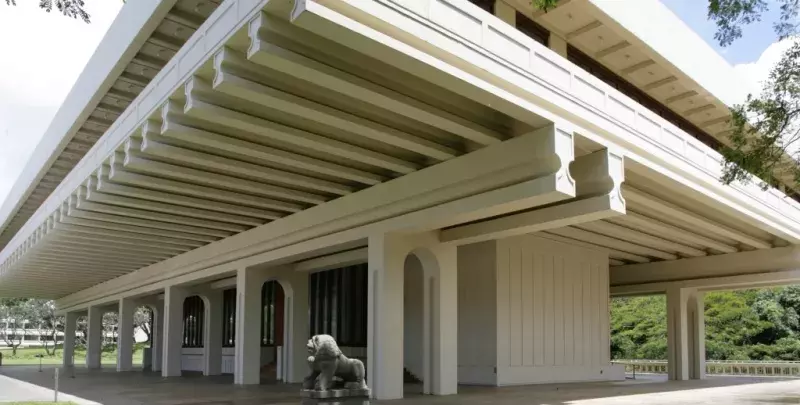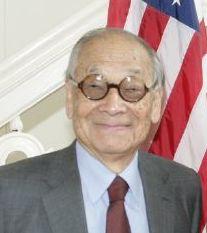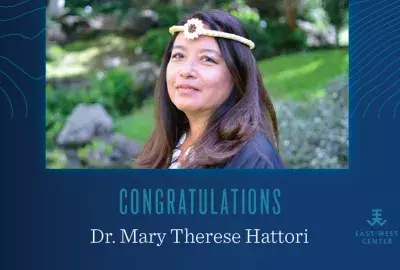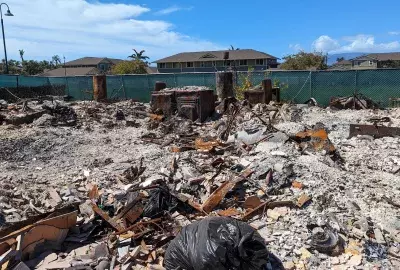Error message

OFFICE/DEPARTMENT
HONOLULU (May 16, 2019) – The East-West Center offers deepest condolences to the family and loved ones of internationally famed architect I.M. Pei, who passed away today at age 102. Pei designed a number of the East-West Center’s original buildings – his only work in Hawai‘i – which have been cited by the prominent arts publisher Phaidon as one of Pei’s top designs worldwide, alongside the National Gallery of Art in Washington, DC, the Bank of China Tower in Hong Kong and the Louvre Pyramid in Paris, among others.
“The East-West Center community will be forever grateful to the architectural master I.M. Pei for the enduring legacy he has left us in the form of the Center’s extraordinary structures,” said EWC President Richard R. Vuylsteke. “His genius has helped make our campus recognizable across the globe, and has provided the inspirational backdrop for a special environment where world leaders have gathered and thousands of scholars and students from all over the world have come to share ideas and experiences.”

When Pei was tapped to design the Center’s buildings in the early 1960s, architectural photographer Darren Bradley wrote, he “was already coming into his own as a brilliant architect … of course, the symbolism of having a Chinese-American architect design the buildings of the East-West Center was probably not lost on anybody.”
“Although today it seems so natural, at that time it was rather a novel idea to try to bring East and West closer together,” Pei himself said in a 2010 interview. “So the East-West Center was something that was very much needed, and I was happy to be able to play a small role in that. Much of my work up until then had been in the (continental) U.S. and Europe, so working on the East-West Center gave me sort of a chance to go back home again, so to speak.”
EWC’s distinctive Jefferson Hall in particular – now the home of its Hawai‘i Imin International Conference Center – is considered a prime example of the “brutalist” design style of the day. The building is on the Hawai‘i state Registry of Historic Places, and has been nominated for the national historic registry.
HONOLULU (May 16, 2019) – The East-West Center offers deepest condolences to the family and loved ones of internationally famed architect I.M. Pei, who passed away today at age 102. Pei designed a number of the East-West Center’s original buildings – his only work in Hawai‘i – which have been cited by the prominent arts publisher Phaidon as one of Pei’s top designs worldwide, alongside the National Gallery of Art in Washington, DC, the Bank of China Tower in Hong Kong and the Louvre Pyramid in Paris, among others.
“The East-West Center community will be forever grateful to the architectural master I.M. Pei for the enduring legacy he has left us in the form of the Center’s extraordinary structures,” said EWC President Richard R. Vuylsteke. “His genius has helped make our campus recognizable across the globe, and has provided the inspirational backdrop for a special environment where world leaders have gathered and thousands of scholars and students from all over the world have come to share ideas and experiences.”

When Pei was tapped to design the Center’s buildings in the early 1960s, architectural photographer Darren Bradley wrote, he “was already coming into his own as a brilliant architect … of course, the symbolism of having a Chinese-American architect design the buildings of the East-West Center was probably not lost on anybody.”
“Although today it seems so natural, at that time it was rather a novel idea to try to bring East and West closer together,” Pei himself said in a 2010 interview. “So the East-West Center was something that was very much needed, and I was happy to be able to play a small role in that. Much of my work up until then had been in the (continental) U.S. and Europe, so working on the East-West Center gave me sort of a chance to go back home again, so to speak.”
EWC’s distinctive Jefferson Hall in particular – now the home of its Hawai‘i Imin International Conference Center – is considered a prime example of the “brutalist” design style of the day. The building is on the Hawai‘i state Registry of Historic Places, and has been nominated for the national historic registry.







